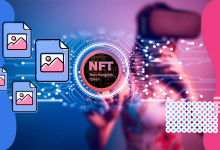All About Business Technology And What It Means
Introduction to Business Technology
All businesses, regardless of the industry that they operate in, are breathing and operating in a world in which information technology is altering the world around them and is moving from the backroom of an organization to the hand of its employees, and customers as well as the general public. The shift is constantly toward a service economy offering services that are ever more customized and tailored to the needs of the consumer.
As technology has improved in the last 10-year period, many developments have come to light that, when combined are rapidly and dramatically changed the way businesses are able to create customer-focused services and products. The speed of improvements and innovations possible can be achieved has increased. If you prefer reading online, you can download it here.
What is business technology?
The business technology strategy is an effective plan for organizing and coordinating technology management across the whole enterprise. It’s a set of techniques, management practices as well as organizational structures, and technology governance, designed to ensure that technology use is optimized across the entire enterprise with the ultimate goal of satisfying the needs of customers and expectations. Many businesses recognize the need to compete not just with their competition but also with themselves to continually improve the perception of their customers and their ability to satisfy the expectations of their customers.
When information technology was first introduced to companies over thirty years ago, the technology was a specialized area that companies set up new departments with the task of controlling it. This led to the creation of an IT department that was seen by some as a support function that was purely administrative and distinct from the business.
A lot of time and effort has been expended since the attempt to “contain” information technology, ensure it’s under the supervision of IT teams, and ensure that spending is managed. Of course, cost control remains a crucial discipline, but the advent of technology has exploded and made it accessible to everyone which means it cannot be effectively controlled by one department.
The technology department of today should collaborate with all business departments to share their knowledge while embracing the disciplines of customer-focused revenue generation, customer focus, and product development that are not available to other departments within the organization. This isn’t a single-way dialogue – marketing departments are, for instance, required to take advantage of the skills of technology management that are available to them in order to prevent cost-overruns or the implementation of products that are not compatible with other parts of the organization’s ecosystem.
A lot of companies have found themselves in limbo, somewhere in between digital disruption and the status of the art. They are unable to incorporate incremental improvement into disruptive digital innovations. To address the issue business technology provides three fundamental elements, as shown in the following image.
Illustration 1.1.1 Business Technology mindset model with three dimensions
Transformation of business capabilities and capabilities
The emergence of new technologies is accelerating digital transformation, which requires process and business development as well as future-oriented governance. Business capabilities comprise of all the processes along with assets (systems along with information) within the business and encompass the entire organization, including all associated functions within the organization. Business capabilities are essential to advancing the business and making use of technology in the most effective method. Transformation is the process of transforming the components and procedures of an organization that are involved in developing business capabilities. Are you looking to develop your capabilities that relate to business capability and transformation? Explore our certification courses.
Digital frontline
Digitalization opens up new opportunities for business and requires constant design thinking about how to deal with customers, partners, and employees in a multi-channel networked environment.
The digital frontline could be described as any digital device that connects the business to the user and is accessible to the customer, regardless of whether they are a consumer or an associate, or whether the client is external or internal.
Customer experience is at the center of all digital frontline initiatives. The digital frontline is a vital aspect because it is the main location where the upcoming potential for growth and focus of business is situated and where the digital transformation occurs with speed and agility. Digital applications and the web along with digital enterprises, facilitate the development of new business opportunities in the area of customer experience digital business, digital marketing, and the internet of things (IoT) services.
Technology backbone
Traditional IT management functions (or IT) are the backbone of technology that is responsible for the development and administration of administrative and digital solutions with professionalism. The technology backbone comprises all systems and processes that facilitate the business’s operations through the administration of services for the end-user as well as corporate and enterprise applications. This is where the core asset of the business is located, and its purpose is to improve the efficiency of operations of the business by ensuring stability, security, and scaling.
Domains of Technology
Technology is present in many different areas of business in the present. It is often not under the control of the conventional CIO and technology functions. Each business is unique, and the kind and location, as well as the amount of technology, can be different in each sector.
We have defined four distinct types of technology: customer interaction technologies, technology for products operational technology, and technology for business processes.
The four areas of technology comprise a range of technologies, some that overlap and others that are distinct. They are backed by infrastructure, data, and security.
1.1.2 Figure 1.1.2: Business Technology domains
Technology for interfacing with customers
The most important characteristic of this type of technology is the interaction with customers and the technology is focused on providing a positive customer experience. Customer interaction technology is about the digitalization of processes that are geared toward customers and services. Therefore, it is this space where digital initiatives can have a clear and immediate impact. Implementing or improving these techniques creates the requirement to look at all aspects of customer journeys from beginning to end. If these solutions are created it is important for the company to make sure that its approach does not limit itself to only digital channels. This restriction can be considered acceptable as a temporary strategy. However, as was previously mentioned digitalization is a larger issue and should be considered a more comprehensive strategy.
Technology for product development
This is the area that includes information technology integrated into the products that the company sells technology that is able to be controlled, monitored, and/or connected remotely and interact with its surroundings 24/7. Therefore, only the technology part of the product that meets these requirements is seen as a technology for the product and not necessarily the product. For instance, the lawn mower doesn’t meet these criteria however, in a robotic lawnmower the embedded technology that allows operating and remote controls fall within the definition of technology used in the product.
While customer interaction technology is the means to connect to your customer base, it’s typically the technology in your product, be it an electronic product, a banking product or professional services, just a few examples which provide the most benefits to customers. Innovations in technology within this field are swiftly advancing with large sources of information and innovative methods like Rapid prototyping and agile design and innovative business models like”as-a-Service” models “as-a-Service” model often used.
Technology for operational use
Operational technology includes all the information systems utilized for managing the operation and monitoring of automation systems as well as various “shop floor” systems. Information technology is growing into this space far more than ever before. A lot of previously non-technical or manual processes today are based on an internet-connected inspection, like the maintenance of a vehicle. What was previously only a manual task is now supported by technology that is operational, such as the laser-aided wheel alignment machine for instance.
Technology for business processes
Business Process Technology consists of information technology and solutions employed to manage business processes and perform commercial transactions i.e. systems that are used to support day-to-day business processes. The most well-known examples of business process technology include the Enterprise Resource Planning (ERP) CRM systems. (CRM) systems utilized by companies.
Business’s future lies in the technology
In the current business environment, the impact of technology on organizations is felt from a variety of perspectives. As this trend continues to increase, a conventional department of technology cannot be the sole control center for an organization’s technology.
In many organizations there is a lack of cooperation between functions of technology and business is not ideal and can result in better business results. To address this issue business leaders need to establish a culture of cooperation within the organization so that the technology management capabilities can be utilized across all departments.
This changing environment demands that your company be structured in a manner that allows you to maximize your business’s potential by reacting quickly to new opportunities and ensuring constant improvement and innovation.
The transition from traditional siloed technology and business functions into a business technology organization also offer the opportunity to harness the management of technology directly in the teams in which they can make the biggest impact. Technology will help make sure that companies are able to realize the full benefits of technology, which ultimately allows them to better provide their customers with better service.







